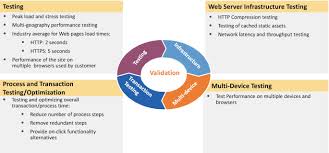In today's digital age, web performance is a critical factor in user experience and business success. A slow-loading website can lead to lost customers, decreased revenue, and damaged brand reputation. To address these challenges, web load balancers have emerged as essential tools for optimizing website performance and scalability. This white paper explores the key benefits of load balancers, their specific applications for CMS-based websites and e-commerce platforms, and best practices for implementation.
White Paper: Optimizing Web Performance with a Load Balancer for CMS-Based Websites and E-commerce Platforms
Introduction
In today's digital age, web performance is a critical factor in user experience and business success. A slow-loading website can lead to lost customers, decreased revenue, and damaged brand reputation. To address these challenges, web load balancers have emerged as essential tools for optimizing website performance and scalability. This white paper explores the key benefits of load balancers, their specific applications for CMS-based websites and e-commerce platforms, and best practices for implementation.
Understanding Web Load Balancers
A web load balancer is a network device or software application that distributes incoming traffic across multiple servers. By spreading the workload, load balancers enhance website performance, reliability, and scalability.
Key Benefits of Web Load Balancers:
- Improved Performance: By distributing traffic across multiple servers, load balancers can significantly reduce response times and improve website performance.
- Enhanced Reliability: Load balancers can automatically redirect traffic to healthy servers in case of server failures, ensuring uninterrupted service.
- Increased Scalability: As your website's traffic grows, load balancers can easily accommodate increased load by adding more servers to the pool.
- Enhanced Security: Load balancers can provide security features like SSL termination, DDoS protection, and IP-based access control.
Applications for CMS-Based Websites and E-commerce Platforms
CMS-Based Websites
- High-Traffic Content Delivery: During peak traffic periods, such as news releases or product launches, load balancers can ensure smooth content delivery.
- Content Management System (CMS) Scalability: Load balancers can handle increased load from multiple CMS instances, improving overall performance and reliability.
- Geo-Distribution: By strategically placing load balancers in different geographic locations, you can reduce latency and improve user experience for global audiences.
E-commerce Platforms
- Peak Traffic Handling: During sales events or holiday seasons, load balancers can effectively manage sudden traffic surges, preventing site slowdowns and crashes.
- Secure Payment Processing: Load balancers can securely handle sensitive payment information by encrypting traffic and redirecting it to secure servers.
- Inventory Management: By distributing the load across multiple servers, load balancers can optimize inventory management systems and ensure accurate product availability.
Best Practices for Implementing Load Balancers
- Choose the Right Load Balancing Algorithm:
- Round Robin: Distributes traffic evenly across all servers.
- Least Connections: Directs traffic to the server with the fewest active connections.
- Least Response Time: Sends traffic to the server with the shortest response time.
- Source IP Hashing: Distributes traffic based on the source IP address, ensuring consistent server assignment for each client.
- Monitor Performance Closely:
- Use monitoring tools to track server performance, response times, and error rates.
- Identify potential bottlenecks and adjust load balancing strategies as needed.
- Implement Effective Caching:
- Cache static content to reduce server load and improve response times.
- Use a content delivery network (CDN) to further optimize global content delivery.
- Secure Your Load Balancer:
- Keep your load balancer software and firmware up-to-date with the latest security patches.
- Implement strong access controls to protect against unauthorized access.
- Monitor for security threats and vulnerabilities.
- Plan for Scalability:
- Design your infrastructure to accommodate future growth.
- Regularly assess your load balancing needs and adjust your configuration accordingly.
Conclusion
By effectively utilizing load balancers, you can significantly improve the performance, reliability, and scalability of your CMS-based websites and e-commerce platforms. By following the best practices outlined in this white paper, you can ensure a seamless user experience and drive business growth.
